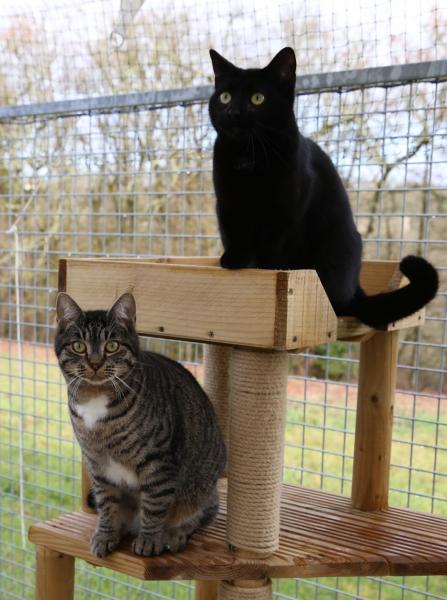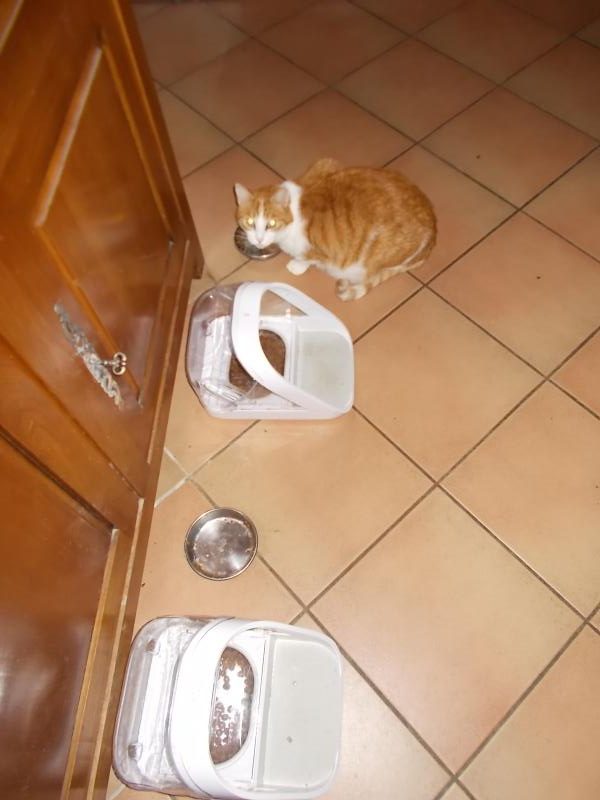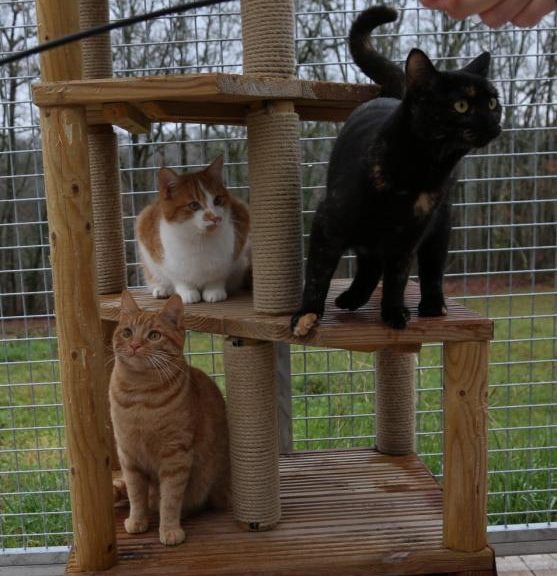Environmental Enrichment Enhances cat well being and quality of life
PROVIDING AN ENRICHED ENVIRONMENT can increase activity, decrease mental stagnation, and prevent many behavior problems. Cats need mental stimulation. An enriched environment will give cats the opportunities to create their own positive experiences.
 VERTICAL SPACE is highly desirable for cats and increases the overall space available to the cat. Provide cat trees, preferably with hiding spots, cat perches, and shelves.
VERTICAL SPACE is highly desirable for cats and increases the overall space available to the cat. Provide cat trees, preferably with hiding spots, cat perches, and shelves.
SCRATCHING IS NORMAL CAT BEHAVIOR. Provide acceptable scratching materials (e.g. scratching posts). To train your cat to use the post, reward with treats and praise. Also put catnip, treats, and toys on or near the post. Scratching posts should be sturdy, and made of materials cats prefer (usually wood, sisal rope, or rough fabric). Locate the scratching post next to a window, sleeping area, or another favorite area. Many cats prefer vertical scratching posts, but some prefer horizontal ones.
INTERACTIVE TOYS AND HUNTING GAMES allow cats to stalk and catch. Make sure to play several times a day with solitary indoor cats.
KEEP THE HOME ENVIRONMENT predictable, but without rigidity or boredom. Make small changes that provide novelty. Studies indicate that cats play best and most often with toys which also use human interaction. Rotated or new toys hold cats’ curiosity and interest for longer periods of time.
 CATS IN THE WILD eat 10-20 small meals per day. By making all food available in the bowl foraging time for indoor cats has been reduced to a few minutes per day, as compared with the hours needed for natural foraging. This contributes to the obesity problems in cats, which can lead to various disorders, as well as early death.
CATS IN THE WILD eat 10-20 small meals per day. By making all food available in the bowl foraging time for indoor cats has been reduced to a few minutes per day, as compared with the hours needed for natural foraging. This contributes to the obesity problems in cats, which can lead to various disorders, as well as early death.
TO MAKE FEEDING MORE NATURAL FOR THE CAT:
- Food puzzles, interactive food toys, and/or food balls
- Make homemade food puzzles from a cardboard box or a plastic beverage bottle with holes cut into it.
- Hide food in different places around the house, and in or around new objects so that cats can “hunt” for their food.
- Boxes, bags, and carriers that are left out provide nice hiding places for cats.
SOCIAL COMPANIONSHIP
Cats are social animals. They need companionship and mental stimulation. Social companionship can be in the form of gentle petting and stroking, feeding, grooming, and play. If cat owners are away for a large part of the day, it may be helpful for their cat to have another cat to interact with.
Do not let your kitten bite your hands or feet. If your kitten is doing this, substitute a toy to bite on instead. In a multiple cat household, set up several stations, with litter boxes, food and water, throughout the home. With critical resources available at more than one site, a cat can choose which path to take, and which cat to greet or avoid.
PREVENTING STARTLE
To enhance the cat’s coping skills, make regular small changes in the environment to provide novelty.
For anticipated changes in the family, such as adding a new pet or baby, prepare the environment and introduce the cat gradually to these changes. For example, when moving, first introduce the cat to a small, comfortable space in the new place, which has been previously stocked with favorite items such as toys or the owner’s clothing. When the cat has adjusted to this environment, gradually increase the new space available to the cat.
CATS CAN BE TRAINED AND ENJOY THE ASSOCIATED ATTENTION
- Reward cats with treats or positive attention to encourage desired behavior.
- Redirect undesired behavior.
- Do not punish; don’t swat, slap, or yell at the cat.
- Train under calm, fun conditions using positive reinforcement (e.g. treats, toys, massage, praise).





